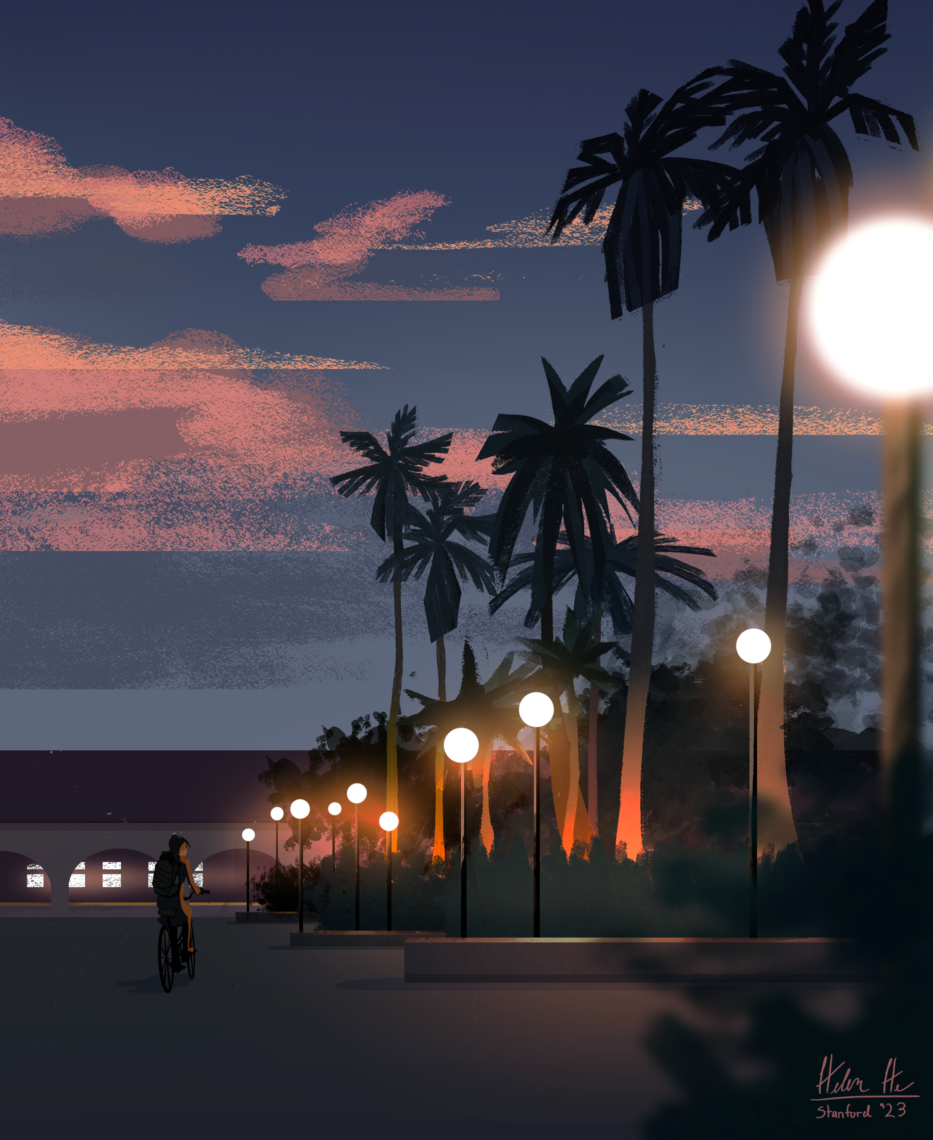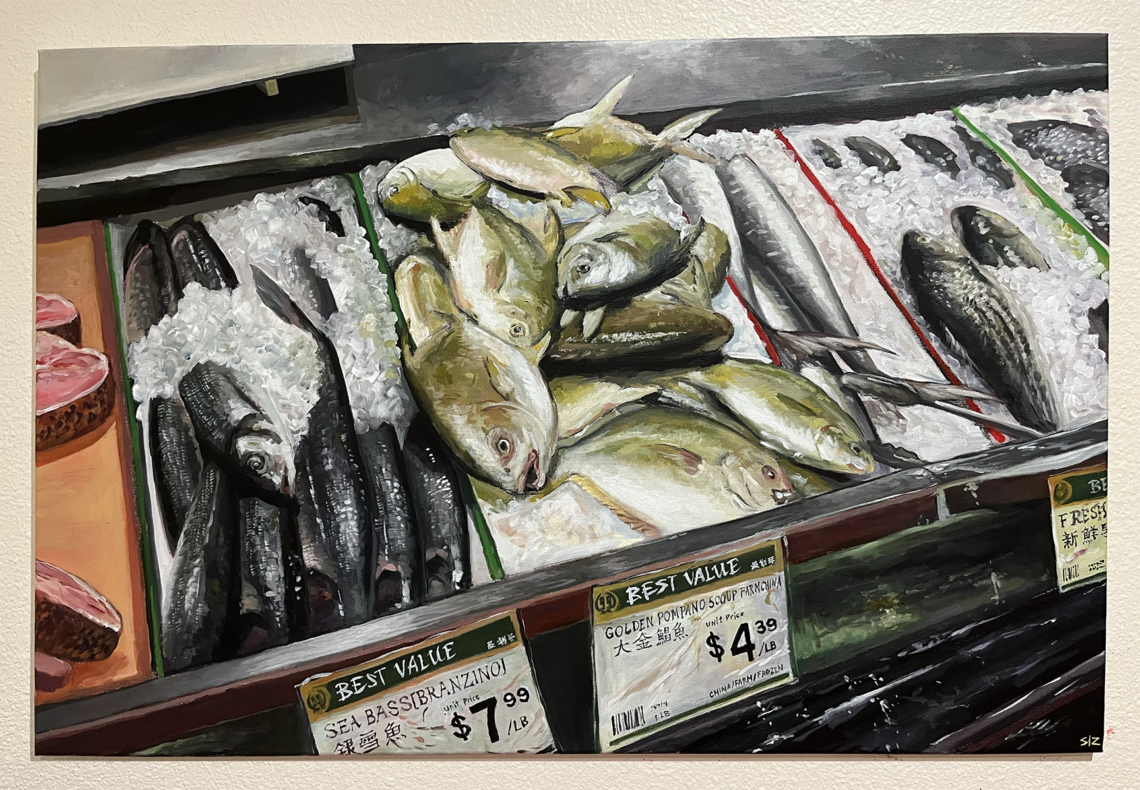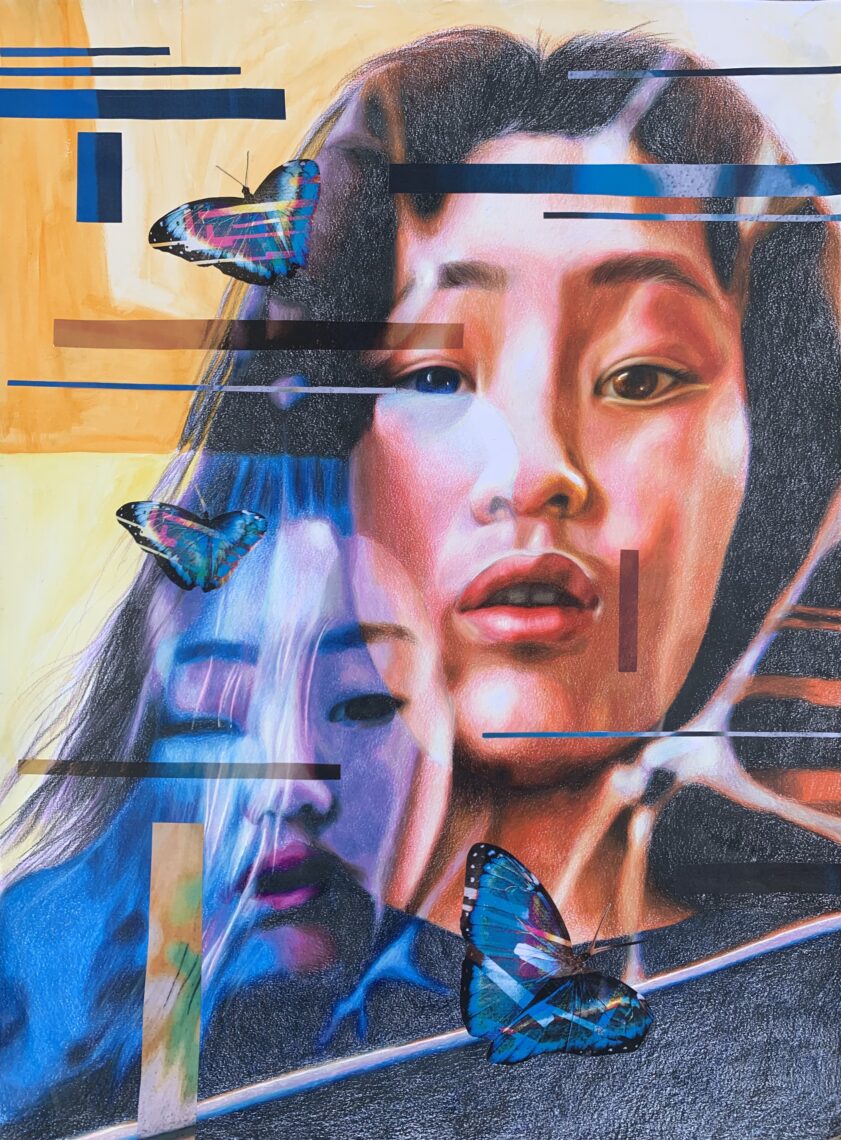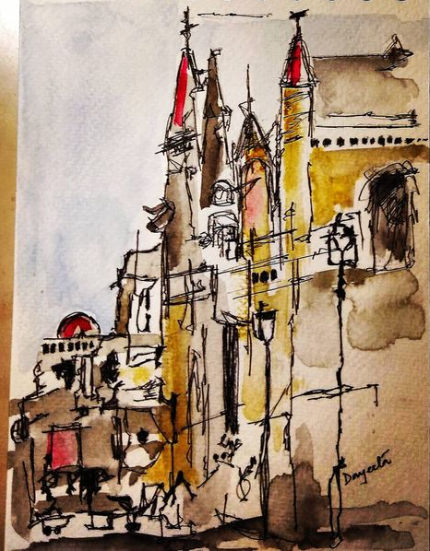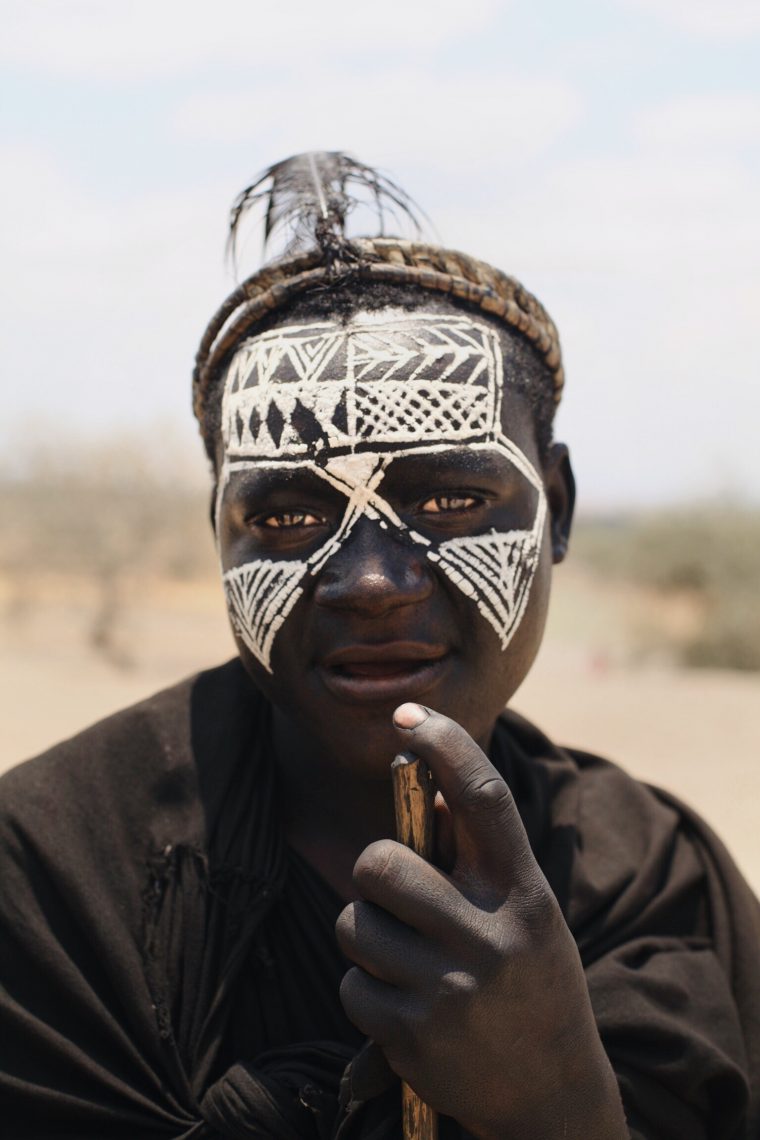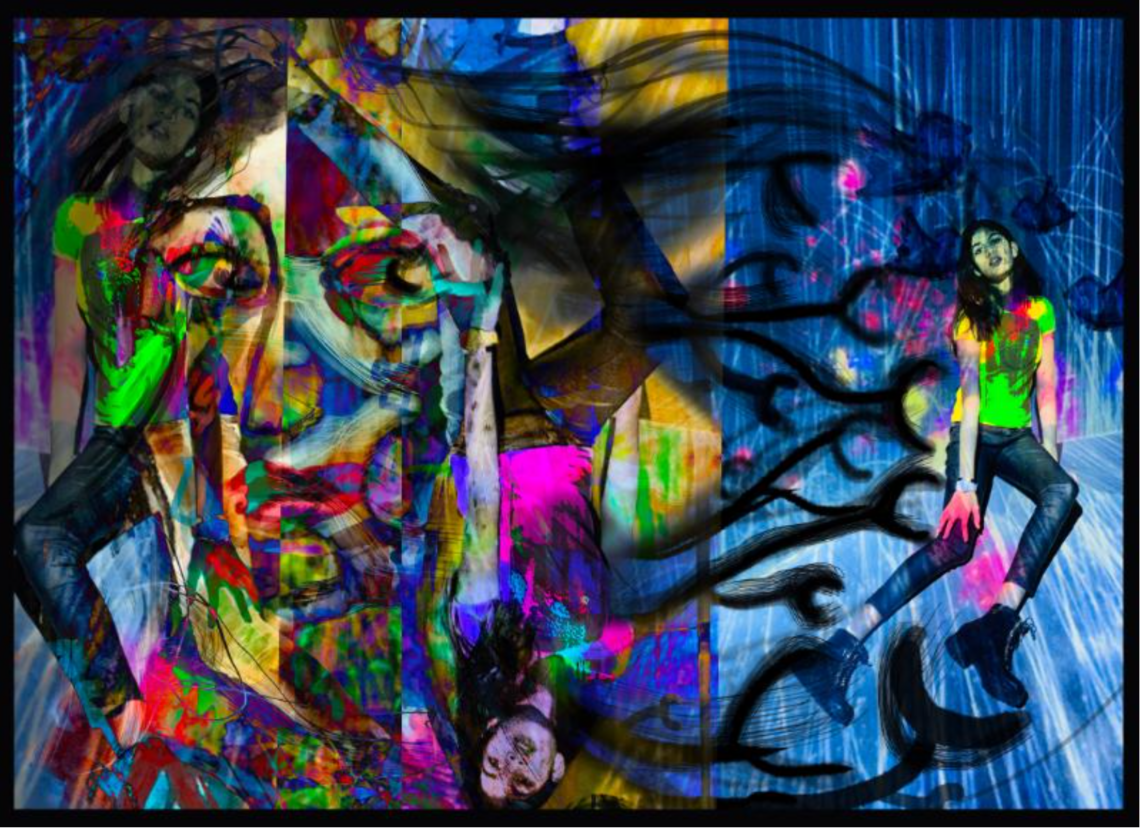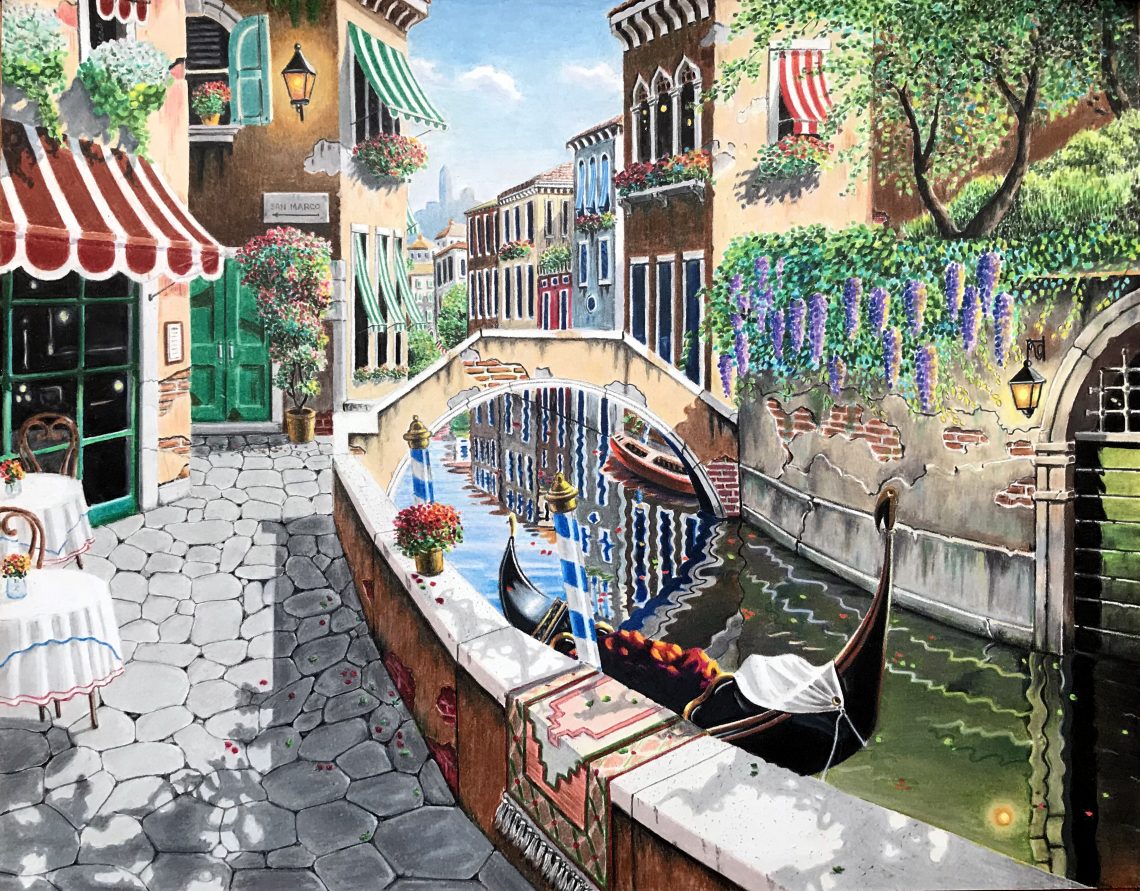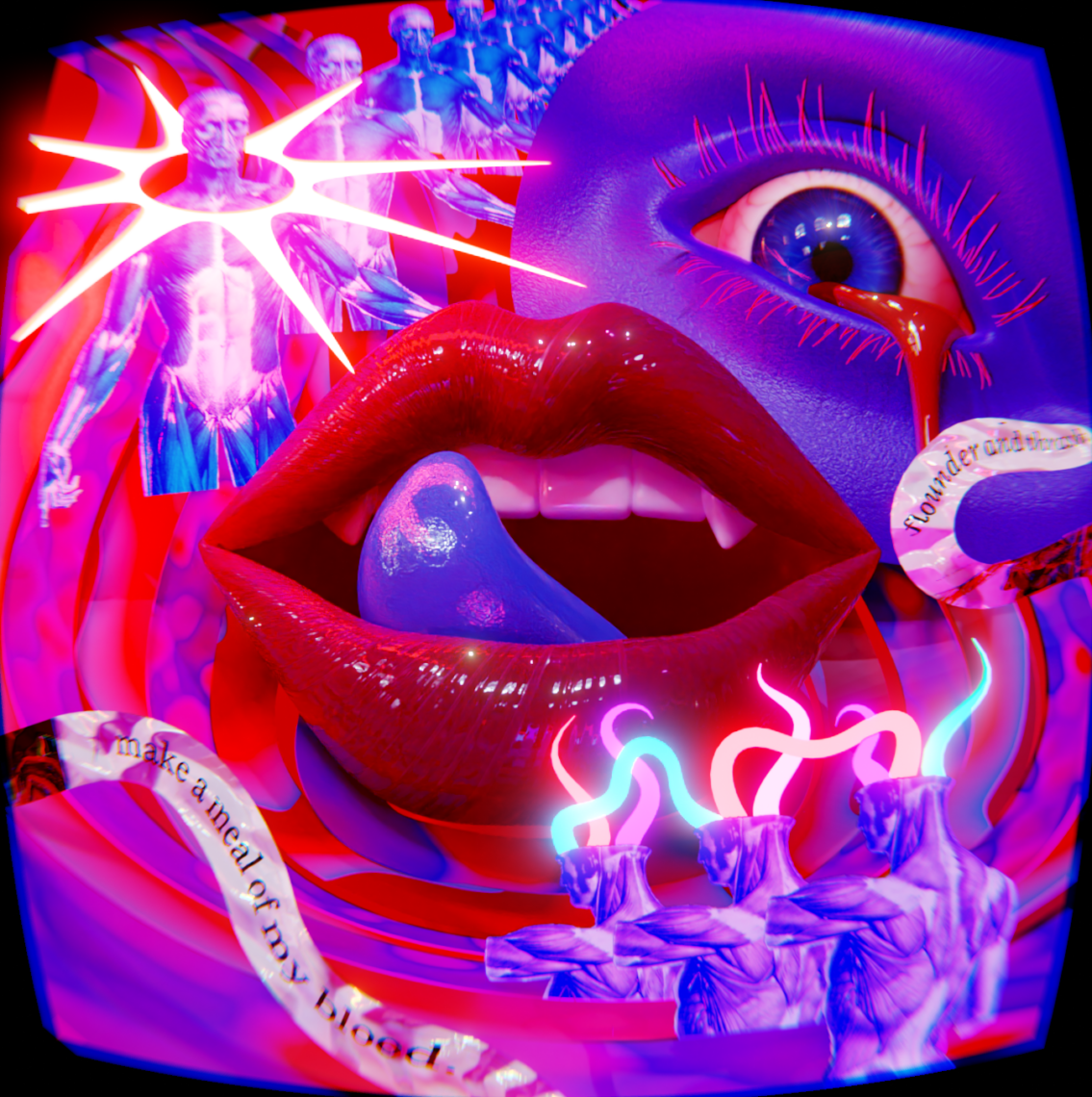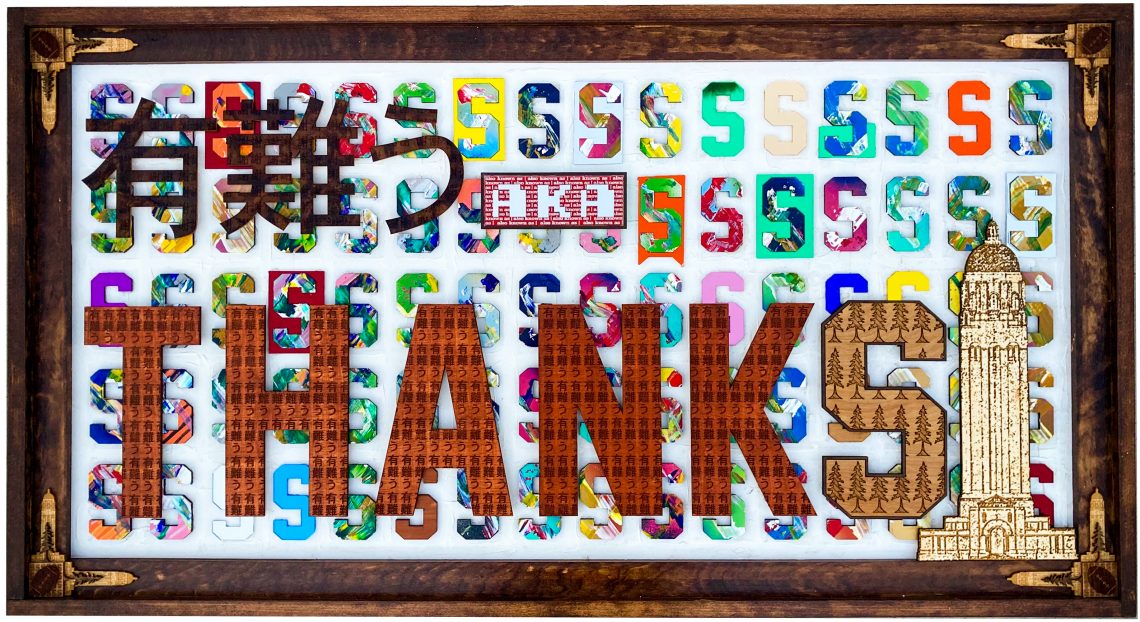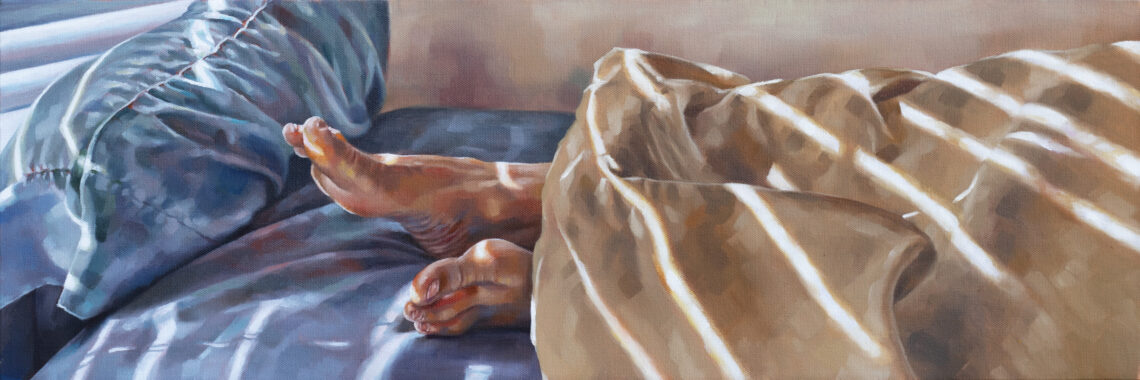
Stanford students challenge perspectives through art
Stanford student-artists showcase original artwork that challenges perspectives in the Sixth Annual Undergraduate Juried Exhibition, on display at the Stanford Art Gallery through Dec. 7.
Stanford student-artists are challenging perspectives of everything from class to culture to environments in an exhibit called Reversals: Sixth Annual Undergraduate Juried Exhibition. Presented by the Department of Art and Art History in the School of Humanities and Sciences, the exhibition features original works by student-artists from an array of academic backgrounds. The show premiered Oct. 1 at the Stanford Art Gallery and will close Dec. 7.
The goal of the exhibition is to evoke how art can provide perspective and raise challenging, multifaceted questions rather than single-minded, single-focused resolutions in a polarized culture. Students from all over the university were invited to submit their work. A panel of judges selected the most original, accomplished, expressive and meaningful art pieces.
Student artists Gunner Dongieux, Jessica Leung and Nicholas Robles discuss below what inspired their creations, describe their creative processes and reflect on how art is shaping their careers.
Nicholas Robles, ’20
Double major in Art Practice and Mechanical Engineering
Southwest Majesty features three photographs taken in the Taos desert in New Mexico, where Nicholas Robles was living at the time. He said that he originally intended to capture the majesty of the desert, but found that through photography he could explore humans’ perceptions of and interactions with that environment.
“I was thinking about how vast and immortal the desert may seem to most. However, there are delicate plants and animals that inhabit the landscape,” Robles said. “This led me to think about protecting the desert, and I settled on the traffic cones for a slightly absurd method of how to slow human development in these fragile areas.”
Robles wasn’t necessarily trying to provide visual commentary on how humans encroach on the environment. Instead, he wanted to encourage viewers to consider the issue for themselves, and maybe even visit the desert to see it with their own eyes.
When it comes to creating his projects, Robles said he does as much research as possible. He also gathers inspiration from magical realism and from exploring the absurd and humorous in unexpected situations.
“Inspiration for me comes in many forms,” he said. “The more artists, environments, activities, people and stories I expose myself to, the quicker I can come up with an idea for a piece.”
Robles – a native of Cincinnati, Ohio – hasn’t settled on a career path, but said that art will always be part of his work and life.
“I want to continue to get better at art, whether that’s pushing a medium to where I haven’t seen it before or pushing into deeper stories to tell.”
Jessica Yeung, ’21
Computer Science major, Art Practice minor
You can’t wear yellow? is a self-portrait, digital photograph that is one in a series called “An Exploration of Identity and the Self.” It focuses on Jessica Yeung’s relationship with her Chinese-American background since arriving at Stanford. Inspiration came from Yeung’s childhood, when she remembers being told not to wear yellow because it did not complement her skin tone.
“I thought as a kid that I could never wear yellow because I had yellow skin, which is not true. So that is why I made this piece,” she said.
Yeung said that she did not grow up around many Asian people. Since joining Stanford, she has acknowledged and confronted her Chinese heritage in ways she never did before.
“Since coming here I’ve been trying to accept and face [my Chinese background] because now a lot of my friends are Chinese and Asian, which has been really interesting to experience for the first time,” she said. “I wanted to have this piece capture that and the directness of eye contact because I’m finally looking at myself as actually Chinese.”
Yeung, who takes her photographs in a studio at the Roble Arts Gym, said that her interest in photography came from her mother, who is also a photographer. In eighth grade, Yeung began taking photographs of landscapes and nature. Through Instagram, she later discovered self-portraiture and fashion photography. She later became the photography director for MINT Magazine and is now the publication’s events director.
Yeung hopes to one day combine her interests in art and computer science by making digital tools that help others make art.
Gunner Dongieux, ’21
Art Practice major, Computer Science minor
Audubon consists of two tapestries depicting life in New Orleans, Louisiana, where Gunner Dongieux was born and raised. Based on traditional French tapestries, the work reflects the city’s modern social structures.
“I’m taking French tapestry and using it to show the two sides of New Orleans, drawing attention to class and socioeconomic divides,” Dongieux said.
In New Orleans, affluence and poverty often exist side-by-side. Dongieux portrays this by painting aristocratic French figures in bright, vibrant colors and placing them alongside brutishly depicted characters from the 1960s animated sitcom The Flintstones.
“I’m really drawn to the idea of taking images from different sources and bringing them together to construct a narrative,” he said. “I like the way you can take disparate elements and bring them into a sense of harmony.”
The tapestry is painted on burlap, a material that Dongieux said is symbolic of uptown New Orleans chic, but is also used by the working class and is common in the oyster business.
“So it has a duality to it,” he said.
Audubon was created in a course taught by art professor Enrique Chagoya last spring. Dongieux typically spends about three days on a painting, but this piece took about a week to complete because of the difficulty of painting on burlap. Audubon is also a significant departure from most of Dongieux’s other paintings, which are largely figurative.
A lifelong artist, as a teenager Dongxieux attended an arts conservatory, where he developed his skills in painting, drawing, sculpture and photography. Once he finishes his studies at Stanford, he intends to pursue a career in the art world.
“I see myself professionally as an artist and maintaining my art practice as a painter,” he said. “I’d also like to have a job in the art world, maybe in the art market, in a gallery or a museum.”




